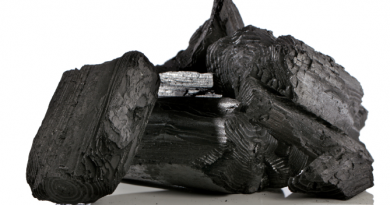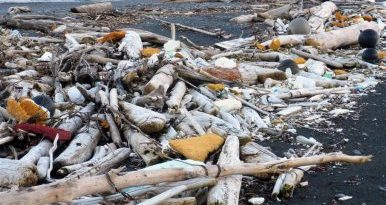Ice Blog – When the Arctic ice won’t freeze

Imagine you head for the North Pole to test your brand-new giant, state-of-the-art icebreaker – and you can’t find any ice thick enough to smash. That must have been a frustrating anti-climax for the crew and operators of the Russian Arktika. When I read the story by Thomas Nilsen on the Independent Barents Observer, I felt like I was wobbling on thin ice myself.
“Ice tests are still ahead, probably this year, because now ice tests did not work out, the ice thickness was 1.1 to 1.2 meters. It was thin and loose, the icebreaker received no resistance at all”, said the head of the “icebreakers acceptance team”, Oleg Schchapin talking to the news agency TASS.
The Russian experts had been expecting something different. Nilsen writes of a “premature” press release sent out by the communication department of Atomflot saying the vessel had shown its mettle, sailing through ice three meters thick. But it turned out the ship’s crew had been hunting in vain for thick ice. After all, Nilsen points out, the entire northern Sea Route north of Siberia from the Kara Sea to the Bering Strait is currently open water.
“A historic event“
On September 15, Arctic sea ice reached its annual minimum extent of 3.74 million square kilometers (1.44 million square miles). That is the second lowest in the 42-year-old satellite record, behind only September 2012, reinforcing the long-term downward trend in Arctic ice extent. The Russian Arctic in particular experienced an exceptional summer heatwave this year.
Zachary Labe is an atmospheric scientist at Colorado State University and the compiler of some of the most informative graphics visualizing climate developments in the Arctic, especially the Arctic Sea Ice. On his Twitter account he posted this on October 21st:
Nothing even comes close to 2020 in our records for sea ice along the Siberian #Arctic…
[*Note that the basin is geographically constrained (same maximum sea ice cover = flat line)] pic.twitter.com/gFelUw3xSq— Zack Labe (@ZLabe) October 21, 2020
The empty nursery
Scientists are particularly concerned about the Laptev Sea, north of the Siberian coast, which is regarded as the “nursery” of Arctic sea ice.
“This part of the Arctic Ocean is usually a factory for new sea ice in autumn and winter as air temperatures dip below zero and surface water starts to freeze. That new ice is carried westward by persistent offshore winds in a kind of conveyor belt”, explains Jonathan Bamber in The Conversation. This summer, the sea ice in the Laptev Sea reached a record low, with no new ice through October, later than any previous year in the satellite record.
Labe describes the situation as “a historic event” and says we must pay attention to these “climate change indicators”.
September sea ice thickness was below average across almost the entire #Arctic Ocean compared to the 1981-2010 average.
Graphic: https://t.co/uzWknWmNnX. Data from PIOMAS. pic.twitter.com/T8MK7jxvpS
— Zack Labe (@ZLabe) October 25, 2020
On October 26th, he tweeted “the extreme event continues in the #Arctic with record low Arctic sea ice extent for this time of year”. He refers to “anomalous warmth in association with little to no sea ice cover north of Siberia”.
Ice-free Arctic: when not if
Meteorologist and journalist Eric Holthaus tweeted this response to the data:
“Just so we’re clear about the current status of climate breakdown, the Arctic Ocean north of Siberia hasn’t even started to refreeze yet. ~20 years ago, it would be entirely frozen by now. This is not normal. We are in a climate emergency.”
In The Conversation, Jonathan Bamber, Professor of Physical Geography at the University of Bristol, says multi-year ice in the Arctic has shrunk by about half in the last 40 years.
“The whole Arctic Ocean is heading for ice-free conditions in the future, defined as less than one million square kilometres of ice cover”, he writes. “That’s down from about 8 million square kilometres just 40 years ago.” Summer 2020 has taken us a step closer to that, says Bamber.
“Alarm as Arctic sea ice not yet freezing at latest date on record”, was the headline of a piece by Jonathan Watts in the Guardian on October 22nd. Walt Meier, a senior research scientist at the US National Snow and Ice Data Center told the paper the data and models suggest the Arctic Ocean could become ice-free between 2030 and 2050. “It’s a matter of when, not if,” he added.
The infamous feedback loops
In a post at the beginning of this year “2020: Crunch time or squelch time for the Arctic“, I had a look at the Arctic Report Card 2019 by NOAA .
“Coming full circle, the decreasing extent of sea ice and snow cover along with the melting Greenland ice sheet leads to an acceleration in the rate of warming of surface air temperatures in the Arctic”, the scientists write. The loss of the reflective white surfaces of snow and ice leads to more melting and more warming. As well as the impacts on those who live there, the rise in global sea level, the release of carbon from the permafrost and the effects on global weather patterns make sure the changes taking place in the Arctic are relevant to the rest of the world as well, the authors conclude.
The slow-down in the freeze-up at the start of this 2020 winter season could amplify those feedback effects.
“We have to pay attention”, was Tom Batchelor’s heading in his coverage for the Independent on October 26th. He describes concerns that a lack of sea ice is ”not just a gloomy portent of climate change but could affect sea life, as drifting ice carries with it nutrients for Arctic plankton.”
In line with the worst-case-scenario
Temperatures for much of the year were eight to 10 degrees Celsius above normal in the Siberian Arctic. On October 23rd, experts from the Russian Tyumen State University, who had been monitoring permafrost in the western sector of the Russian Arctic, concluded the average annual air temperature in the Arctic had gone up almost three degrees Celsius since 1970. Alexander Vasilyev from of Tyumen State University and the Earth Cryosphere Institute of the Tyumen Scientific Center at the Siberian Branch of the Russian Academy of Sciences, said that is “close to the severe climate change scenario.”
Sea ice low – snowy winter ahead?
Studies show that the warming of the Arctic and the melting of sea ice change weather further south by altering the jet stream and other waves that move weather systems. Environment journalist Stephen Leahy compares the situation to the winter of 2010:
This is going to have a big impact on winter weather in N. Hemisphere. Cold and snowy according to my 2010 article that first looked at potential impacts of sea ice loss https://t.co/x2jd4n4ke0 https://t.co/JPZBiXelmb
— Stephen Leahy (@StephenLeahy) October 26, 2020
We still have a choice
The coming months will show if Leahy is right – and if so, whether a cold, snowy winter in parts of Europe will once more be used by those who still try to play down the extent of global warming and its impacts.
Dr Stefan Hendricks, a sea ice physics specialist at the Alfred Wegener Institute, summed up the reaction of many scientists and observers when he told The Guardian the sea ice trends were grim but not surprising:
“It is more frustrating than shocking. This has been forecast for a long time, but there has been little substantial response by decision-makers.”
In an earlier post entitled “Summer 2020: when the unprecedented becomes the precedent”, I quoted Bruno Tremblay, associate professor in the Department of Atmospheric and Oceanic Sciences at McGill University and co-author of a study Arctic Sea Ice in CMIP6, published in Geophysical Research Letters , which analyzed recent results from 40 different climate models.
“The key point is that we have now reached a point that whether we are very aggressive in cutting our emissions or whether we go business as usual, we will be seeing years without any ice in the Arctic Ocean in the summer,” he said in an interview with Radio Canada International.
Global climate on thin ice
What we can influence, he says, is how often this will happen.
“If we go business as usual, it will be a much more frequent occurrence, it will be pretty much always the case starting in 2030, 2035 or 2040,” Tremblay said.
“If we do severe cuts to our CO2 emissions, it will be an occurrence that happens once in a while but it will still occur.”
Tremblay says the last time the Earth experienced conditions like these was about 6,000 years ago:
“And what we’re going to see at the end of the century, you’re going to have to go back even further back, like hundreds of thousands of years, millions of years back when you saw conditions that warm.”
In the course of this winter, no doubt the crew of the Russian icebreaker will still have plenty of opportunities to test their new vessel, in preparation for increasing traffic through Arctic waters. For those hoping to profit from shorter transport routes and easier access to hitherto hidden resources in the Arctic, thin ice around the North Pole might look like good news. For those of us concerned about the fragile ecosystem and the unique lifestyle of northern peoples – not to mention the threat to the planet if we can’t halt climate change in the next few years – thin ice at the top of the world is a spine-chilling portent.
Related stories from around the North:
Canada: The Arctic could soon be ice-free in the summer. Can geoengineering help?, CBC Radio
Greenland: Greenland losing ice faster this century than any previous one in last 12,000 years, says study, CBC News
Norway: Climate change hits back at Svalbard, coal mine flooded by melting glacier in Norway, The Independent Barents Observer
Russia: North Pole ice cap too thin for testing Russia’s giant icebreaker, The Independent Barents Observer
Sweden: Extra billions to SAS – but with stricter climate requirements, Radio Sweden
United States: Bering Sea ice at lowest extent in at least 5,500 years, study says, Alaska Public Media




A runaway climate collapse scenario is in process. Though countless forms of anthropogenic activity are a part of the equation, when will academia acknowledge the ongoing geoengineering operations? Solar radiation management / cloud albedo enhancement programs are making the overall climate scenario far worse, not better. The public has a right to know about the ongoing climate engineering experimentation with Earth’s life support systems.